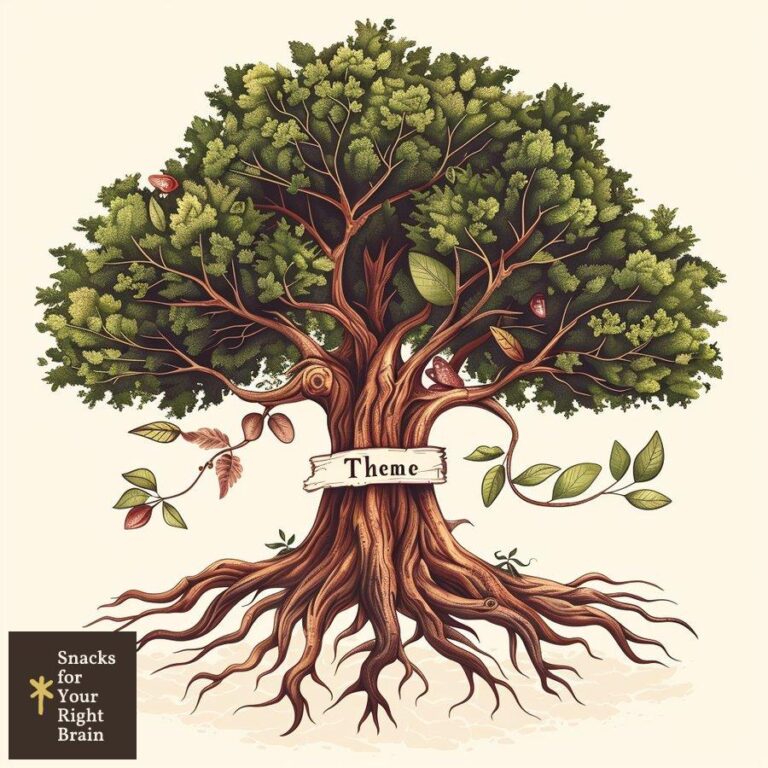How to Include Flashbacks in a Short Story
What are flashbacks in short stories?
Flashbacks are narrative devices that allow writers to present events that occurred before the current timeline of the story. They provide context, depth, and background to characters and plotlines, enriching the reader’s understanding of the present situation. Flashbacks can take various forms, such as memories, dreams, or even dialogues that evoke past events.
In short stories, flashbacks serve several purposes:
-
Character Development: They reveal motivations, fears, and desires that shape a character’s actions and decisions.
-
Plot Enhancement: Flashbacks can introduce critical information that alters the reader’s perception of the plot, creating twists or deepening conflicts.
-
Emotional Resonance: They evoke feelings by connecting past experiences with present emotions, allowing readers to empathize with characters on a deeper level.
Understanding the nature of flashbacks is essential for writers aiming to weave them effectively into their narratives.
Why are flashbacks important in storytelling?
Flashbacks play a vital role in storytelling by providing layers of meaning and enhancing the narrative’s emotional impact. They allow writers to explore themes and character arcs in a non-linear fashion, creating a richer reading experience. The significance of flashbacks can be summarized as follows:
-
Contextualization: They provide background information that helps readers understand character motivations and the circumstances leading to current events.
-
Theme Exploration: Flashbacks can highlight central themes, such as loss, regret, or nostalgia, by juxtaposing past and present experiences.
-
Engagement: They can create suspense and intrigue, encouraging readers to piece together the story’s timeline and anticipate future developments.
Incorporating flashbacks thoughtfully can elevate a short story, making it more engaging and meaningful.
When should you use flashbacks in a short story?
Determining when to use flashbacks in a short story requires careful consideration of the narrative’s flow and the emotional weight of the past events. Flashbacks are most effective when:
-
Providing Essential Backstory: Use flashbacks to convey crucial information that shapes the characters’ current actions or relationships.
-
Enhancing Emotional Depth: Introduce flashbacks during pivotal moments to evoke strong emotions, allowing readers to connect with characters’ struggles and triumphs.
-
Creating Tension or Conflict: Flashbacks can be strategically placed to reveal secrets or unresolved issues that add complexity to the plot.
-
Developing Character Relationships: When exploring the dynamics between characters, flashbacks can illustrate how past experiences influence their present interactions.
Using flashbacks at these key moments can enrich the narrative and deepen the reader’s investment in the story.
How do you transition into and out of flashbacks smoothly?
Smooth transitions into and out of flashbacks are essential for maintaining the narrative’s flow and keeping readers engaged. Here are effective strategies for achieving seamless transitions:
-
Clear Visual Cues: Utilize formatting techniques, such as italics or a change in font, to signal a shift in time. This visual distinction helps readers recognize when a flashback begins and ends.
-
Sensory Details: Incorporate sensory descriptions that evoke the past, such as sounds, smells, or sights, to create a vivid connection between the present and the flashback.
-
Dialogue and Internal Monologue: Characters can reference past events in their dialogue or thoughts, leading naturally into a flashback. This technique grounds the transition in character experience.
-
Pacing Considerations: Ensure that the pacing before and after the flashback aligns with the overall rhythm of the story. Gradual shifts can help maintain continuity.
Using these techniques can facilitate smooth transitions, enhancing the reader’s experience and understanding of the narrative.
What techniques can you use to integrate flashbacks seamlessly?
Integrating flashbacks seamlessly into a short story involves employing various techniques that enhance narrative coherence. Consider the following methods:
-
Narrative Framing: Establish a clear narrative frame that connects the flashback to the present moment. This framing can involve a character reflecting on a past event, which provides context for the flashback.

-
Thematic Resonance: Ensure that the flashback aligns with the story’s themes. A flashback that echoes the main themes can deepen the reader’s understanding and emotional connection.
-
Character Perspective: Use the character’s perspective to guide the flashback. This technique allows readers to experience the past through the character’s emotions and thoughts, making the flashback more impactful.
-
Symbolism: Incorporate symbols or motifs that link the flashback to the present. This connection can create a cohesive narrative thread that enhances the story’s depth.
By employing these techniques, writers can create a more integrated and compelling narrative that effectively utilizes flashbacks.
How do you structure flashbacks effectively within a short story?
Structuring flashbacks effectively requires careful planning to ensure they serve the story’s overall purpose. Here are key considerations for structuring flashbacks:
-
Chronological Order: Organize flashbacks in chronological order to maintain clarity. This approach helps readers follow the timeline and understand the sequence of events.
-
Length and Focus: Keep flashbacks concise and focused on specific moments that contribute to character development or plot advancement. Avoid lengthy digressions that may disrupt the narrative flow.
-
Integration Points: Identify strategic points in the story where flashbacks can enhance the narrative. These points might coincide with character revelations, conflicts, or emotional climaxes.
-
Return to Present: Plan how to return to the present seamlessly after a flashback. This return should feel natural and maintain the story’s momentum.
A well-structured flashback can enhance the narrative’s effectiveness, providing essential context and emotional depth without overwhelming the reader.
What makes a flashback compelling and memorable?
A compelling and memorable flashback captivates readers and resonates emotionally. Several factors contribute to the effectiveness of a flashback:
-
Emotional Authenticity: Flashbacks that evoke genuine emotions, such as joy, sorrow, or nostalgia, create a lasting impact. Readers are more likely to remember moments that resonate with their own experiences.

-
Unique Perspective: Presenting a flashback from a distinct point of view can offer fresh insights into characters and events, making the flashback stand out.
-
Conflict and Resolution: Flashbacks that highlight conflicts or tensions, followed by resolutions or realizations, can create a powerful narrative arc that engages readers.
-
Vivid Imagery: Utilizing descriptive language and sensory details can transport readers into the past, making the flashback feel immediate and real.
Incorporating these elements can transform a standard flashback into a memorable moment that enriches the overall narrative.
How can you maintain proper pacing when using flashbacks?
Maintaining proper pacing when using flashbacks is crucial for keeping readers engaged and ensuring the narrative flows smoothly. Consider the following strategies:

-
Balance Between Present and Past: Strive for a balance between the present storyline and flashbacks. Overloading the narrative with flashbacks can disrupt pacing and confuse readers.
-
Short and Impactful: Keep flashbacks brief and impactful. A concise flashback can deliver essential information without dragging the story’s momentum.
-
Strategic Placement: Position flashbacks at moments of high tension or emotional significance. This placement can enhance the impact of both the flashback and the surrounding narrative.
-
Use of Cliffhangers: Ending a flashback on a cliffhanger can create suspense and encourage readers to return to the present storyline, maintaining engagement.
By carefully managing pacing, writers can ensure that flashbacks enhance rather than hinder the narrative flow.
What are common mistakes to avoid when writing flashbacks?
Writers should be aware of common pitfalls when incorporating flashbacks into their short stories. Avoiding these mistakes can lead to a more cohesive and engaging narrative:
-
Overly Long Flashbacks: Lengthy flashbacks can disrupt pacing and lose readers’ interest. Aim for brevity while ensuring that the flashback conveys essential information.

-
Lack of Clear Transition: Failing to provide clear transitions into and out of flashbacks can confuse readers. Use visual cues and sensory details to guide them smoothly.
-
Irrelevant Information: Including flashbacks that do not contribute to character development or plot advancement can dilute the story’s impact. Ensure that each flashback serves a purpose.
-
Inconsistent Tone: Maintaining a consistent tone between the present narrative and flashbacks is essential. Abrupt shifts in tone can disorient readers and detract from the story’s coherence.
Avoiding these common mistakes can enhance the effectiveness of flashbacks and improve the overall quality of the short story.
How can you analyze successful flashbacks in published short stories?
Analyzing successful flashbacks in published short stories provides valuable insights into effective storytelling techniques. Consider the following steps for a thorough analysis:
-
Identify the Purpose: Determine the purpose of the flashback within the story. Does it provide essential backstory, enhance emotional depth, or create tension?
-
Examine Structure: Analyze how the flashback is structured. Look for elements such as length, pacing, and transitions. Consider how these factors contribute to the overall narrative flow.
-
Evaluate Emotional Impact: Reflect on the emotional resonance of the flashback. Does it evoke strong feelings? How does it connect with the reader’s experience?
-
Observe Integration: Notice how the flashback integrates with the present storyline. Are there clear connections between past and present? How does the flashback enhance the reader’s understanding of the characters and plot?
By conducting a detailed analysis, writers can learn from successful flashbacks and apply these lessons to their own work.
What exercises can help improve your flashback writing skills?
Improving flashback writing skills involves practice and experimentation. Here are several exercises designed to enhance your ability to incorporate flashbacks effectively:
-
Flashback Journaling: Write a series of flashbacks from a character’s perspective. Focus on specific memories that shape their current actions and emotions.
-
Flashback Dialogue: Create a dialogue between two characters that references a past event. Use this dialogue to transition into a flashback, exploring the event’s significance.
-
Flashback Mapping: Create a timeline of your story, marking key events that could be explored through flashbacks. Consider how these events contribute to character development and plot progression.
-
Peer Feedback: Share your flashbacks with fellow writers or readers and solicit feedback. Discuss what worked well and what could be improved.
Engaging in these exercises can strengthen your flashback writing skills, enabling you to create more compelling and effective narratives.
In conclusion, flashbacks are a powerful tool in short story writing, providing depth, context, and emotional resonance. By understanding their purpose, mastering integration techniques, and avoiding common pitfalls, writers can craft engaging narratives that resonate with readers.






